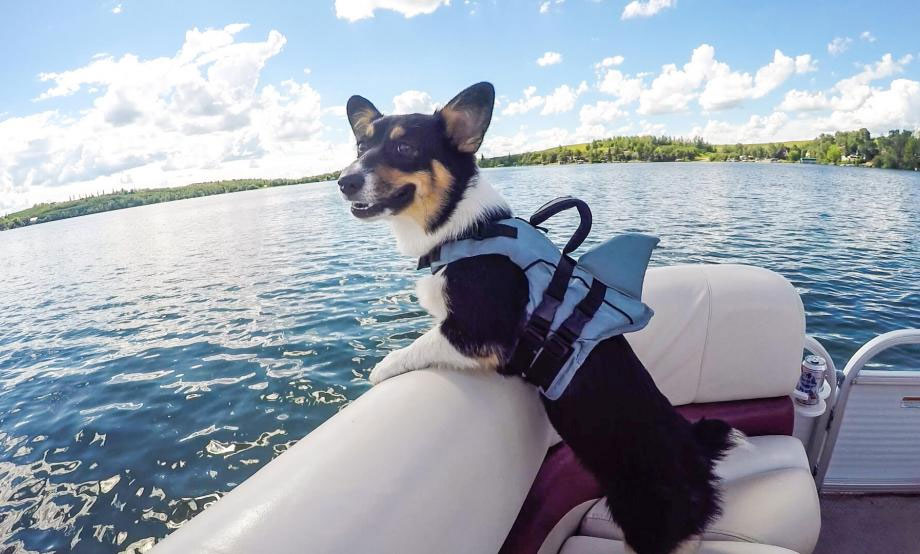Canada is 150 years old! And, we can’t think of a better way to celebrate this significant milestone than to get out onto this province’s rivers and lakes this weekend. Boating and other water sports are a fun summer activity. But, before you grab your paddle board or jump into that boat, let’s take a moment to talk a bit about what you should have with you when you go.
This will be part one of our two-part series on boating safety. In this blog we will take you through the ins & outs of operator cards, personal floatation devices, and other safety equipment that you should have with you when you take to the water.
Operator Cards
Let’s start with operator cards. In Canada, you need to have “proof of competency” with you before you drive a motorized boat. This includes all types of motorized boats, no matter their size or horsepower of the engine.
This card, called a "Pleasure Craft Operator Card” is essentially a boating driver’s licence that shows you understand basic boating safety and have a good understanding of the “rules of the road” for Canadian waterways. You can get one by passing an accredited boating safety test at a registry office.
If you are planning to go boating in any human powered vehicle, such as paddle boards, kayaks or canoes, you do NOT need this operator card. But, for power driven vehicles, such as jet skis or pleasure craft, you will need to have one with you in your boat while you are on the water.
What if you rent a motorized boat?
If you plan to rent a boat and you do not have a Pleasure Craft Operator Card, you can still operate the boat for a period of time. When you rent the boat you and the rental company will provide you with a basic safety orientation to the boat, its equipment and features, and information about any hazards in the local waterways. Then you and the rental agency will sign a safety checklist that you must carry on the boat with you during the rental period. This safety checklist will count as a proof of competency. As soon as your rental is over, your safety checklist is no longer a valid proof of competency.
Safety equipment
Regardless of whether you are going to be in a canoe or kayak or a motorized boat, there are certain things that you should always have with you when you are on the water. These items will help you be prepared if something goes wrong:
- proper size life jackets or personal floatation device (PFD) for everyone on board. To learn how to choose a PFD, see the next section of this blog.
- a first aid kit
- a small, watertight flashlight so that if you're caught on the water near dusk, you can be visible
- a sound-making device, such as a whistle to bring attention to yourself if you need help
- a paddle to help you get to shore in case of engine failure
- a bucket in case you need to bail water out of your boat
Before you go also check your safety equipment to make sure that it is:
- in good working order
- easy to reach (so that it can be used in an emergency)
- maintained and replaced as neededPicking a Personal Floatation Device (PFD)
A personal flotation device—also known as a PFD, life jacket or life vest—gives you more buoyancy to help stay afloat. The most important advice about PFDs is simply this: Be sure to wear one.
The second most important advice for a PFD is to make sure that it fits. Proper fit is key, not just for comfort when paddling, but it ensures you’ll float properly in the water if you happen to end up there. When you are purchasing a PFD for you, your children, or even your pets, it is important to try them on and check for fit when you purchase it. Here are a few tips to keep in mind:
PFDs for your family
When you are purchasing a PFD, here are a few tips to find the right one for you:
- Check the sizing on the label. Adult sizes are based on chest size, and children’s sizes are based on weight. It is helpful to have measured and weighed everyone prior to going to the store in order to start off on the right foot.
- Try the PFD on.
- Check the fit. Loosen all the adjustment straps, put the PFD on, then tighten the straps so it’s comfortably snug around your chest.
- Pull up on the shoulder straps. If your PFD rides up over your chin and ears it can be awkward or dangerous in the water. If it rides up, it needs more adjusting or is likely too big for you.
- Check for comfort. Make sure you have a full range of motion, that you can breathe easily, and that there is no chafing under your arms. If you are planning to use the PFD for canoeing, kayaking or paddle boarding, you should sit or kneel in a paddling position and go through the motions of a paddling stroke.
PFDs for Dogs
Don’t forget about the fur members of the family. While many dogs are good swimmers, others lack confidence in the water or they may tire or panic away from shore. When you are purchasing a PFD for your pet, consider the following:
- It should fit snugly so your dog cannot twist, step or swim out of it
- A low-profile style will have less potential of catching a snag
- Look for one with easy-release buckles
- A handle for lifting your pooch out of the water is also helpful
- Bonus points if you can find a PFD for your dog that does all of this and also has a shark fin!
If you are looking for a place to purchase any of the safety items we mentioned—including a PFD— check out Atmosphere here in calgary. Go pay them a visit before you go on your boat trip. You won’t regret it.
Now that you have your safety items, a properly fitted PFD and an operators card—if you need it—you are ready to take on Alberta’s waters. Have fun out there! And stay safe!

